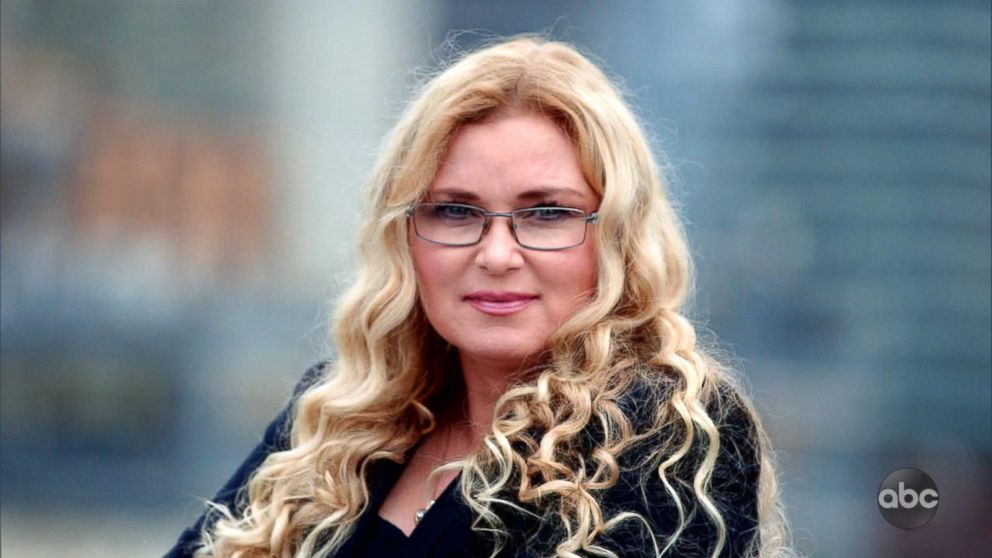
Transcript for Genetic genealogist breaks open 1992 cold case in ‘a couple of days’: Part 3
Reporter: This past spring, another cold case becomes big news. The so-called golden state killer. I was finishing eating dinner one night and I saw the case of the golden state killer. And I stopped and listened to that. They used a genealogy website to connect him to the murders. And my first reaction was, “Why can’t they do something like that with Christy?” Reporter: Across the country in California, a former actress and singer is also watching with keen interest. I’ll have to check with my supervisor. Reporter: Her name is cece Moore and she is now a genetic genealogist. She is also watching this story with keen interest. You may have seen her on this show. You may be my father. Reporter: Helping foundlings, babies abandoned at birth, and adoptees find their biological parents. Making family connections never thought possible. I love you. Reporter: Moore got hooked on genealogy when she researched her own family years ago. And although she didn’t break the golden state killer case, her groundbreaking methods helped. She has received international recognition for her pioneering techniques. This was a different way of applying the science. It’s not taught in schools, there’s no degree you can get in genetic genealogy. There’s no certification, you had to think outside the box and perhaps you needed some creativity, and I came from a creative background. Reporter: Moore has always known she could use her genetic genealogy skills to catch criminals, but she was reluctant. There were some bioethicists and legal experts that I expected to be against this and I was very surprised after the golden state killer arrest that they were completely supportive. Reporter: And she is now teaming up with a company called parabon nanolabs, who is already familiar with the mirack cold case. Off the bat, we’re talking a little bit of an older sample, 1992 — Level of mixture? They have over 600 nanograms. They’ve ruled out 60 men using DNA. Reporter: In 2017, the Lancaster district attorney connects with parabon nanolabs, who are able to use an innovative technique to create a rendering of the suspect using DNA found at the crime scene. Months later, the composite is released to the public. For almost 25 years, the perpetrator has walked out there among us. He could be your neighbor, your friend, your co-worker. Reporter: What was it like to look at a sketch of a person who could potentially be who raped and murdered your sister? It was gut-wrenching. I went through those images over and over with people I’ve ran into in my lifetime, and people she knew. Reporter: Ultimately the sketch doesn’t shake loose any viable leads. But now parabon has their new secret weapon, cece Moore. Could this DNA detective help catch Christy mirack’s killer? I feel a real affinity to her, and so I’m thinking about her a lot and really keeping her right where I can see her. So, I’m always inspired to work hard on these, but I think it’ll make me work even harder, if that’s possible. It was a no-brainer at that point in time to go ahead and do that. This might truly be the last thing we can do for the case. Reporter: In the mirack case, there was DNA found both on the carpet and Christy’s body. Cece Moore and parabon convert that DNA into a data file and upload it to a free, no-frills genealogy website called gedmatch designed to find genetic relatives. We just need a second cousin, third cousin, or closer to do so. Reporter: They get a hit. The DNA file matches up with several distant family members of the killer. I built back to great grandparents for each of the second cousins and then I started building forward. I flipped that tree upside-down, do what I call reverse genealogy. I’m building forward in time, trying to find the right person in the right place with the right ancestral mix to be the subject. Reporter: Cece narrows her search down to a target family in Lancaster of northern European descent. Those top few matches I was working with led to a specific family in Lancaster, Pennsylvania, so I knew that the suspect was closely related to that family, but I didn’t know how. I had to find the right person in that family. Reporter: She also notices that the suspect has some Latin American heritage. I was seeing a lot of people that shared DNA with this suspect that had four Puerto rican grandparents or eight Puerto rican great-grandparents. I started digging into newspaper archives, and I came across an engagement announcement for the son of that target family. It listed his father, who had a Latin American name, and I thought, “Aha. Now we’re getting close.” There was an online magazine that had an interview with him, and it talked about how he loved to cook Puerto rican food, because he was half Puerto rican, and then I knew this was the guy. When I first identified him, I couldn’t believe it was him. I said, “It can’t be him. It can’t be this guy.” I went back and rechecked my work over and over again. Reporter: Cece’s conclusion stuns district attorney Craig Stedman. This was big news. Biggest break we may have had in the whole case and it turned out to be the biggest break we had. How long did it take you, from the time you started working on this case, to find that person? I think it took a couple of days. Reporter: Well, my mouth drops open, because this is a case that went unsolved for over 25 years. And it took you just a couple of days to find a real serious tip. Genetic genealogy is incredibly powerful, and I’ve known that for a long time. Reporter: Now it’s up to law enforcement to confirm cece’s findings by obtaining DNA from the possible suspect and matching it to that DNA from the crime scene. You don’t want to walk up to a homicide suspect, particularly one this brutal, and just say, “Hey, can you give us your DNA?” So we made the plan to get his DNA through surreptitious means. Reporter: An undercover unit begins to stake out the suspect, trailing him as he enters this elementary school. They sit and wait for their moment. I was nervous waiting for reports about whether they got it, whether they didn’t get it. He was observed using a Kirkland water bottle and chewing gum. He threw them out, and these things that he threw out became the most valuable things for us. Reporter: DNA from that water bottle and chewing gum is rushed to the crime lab. After 25 years, police think they have their man. When we finally got the confirming DNA, we wanted to arrest him pretty quickly. I was shocked because he seemed like such a Normal person, a successful, talented family man.
This transcript has been automatically generated and may not be 100% accurate.





